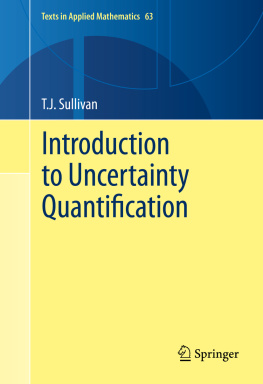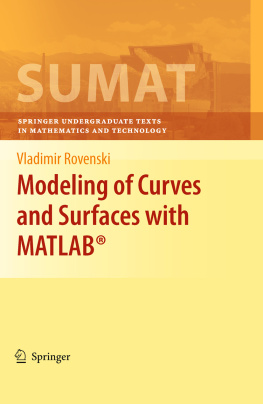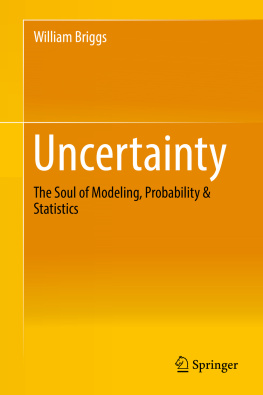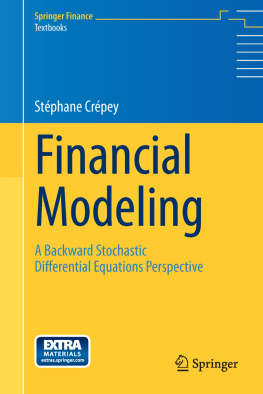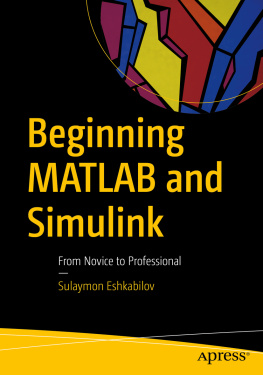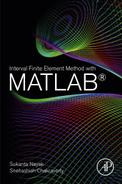Souza de Cursi Eduardo - Uncertainty Quantification and Stochastic Modeling with Matlab
Here you can read online Souza de Cursi Eduardo - Uncertainty Quantification and Stochastic Modeling with Matlab full text of the book (entire story) in english for free. Download pdf and epub, get meaning, cover and reviews about this ebook. year: 2015, publisher: Elsevier Science, genre: Home and family. Description of the work, (preface) as well as reviews are available. Best literature library LitArk.com created for fans of good reading and offers a wide selection of genres:
Romance novel
Science fiction
Adventure
Detective
Science
History
Home and family
Prose
Art
Politics
Computer
Non-fiction
Religion
Business
Children
Humor
Choose a favorite category and find really read worthwhile books. Enjoy immersion in the world of imagination, feel the emotions of the characters or learn something new for yourself, make an fascinating discovery.

- Book:Uncertainty Quantification and Stochastic Modeling with Matlab
- Author:
- Publisher:Elsevier Science
- Genre:
- Year:2015
- Rating:5 / 5
- Favourites:Add to favourites
- Your mark:
- 100
- 1
- 2
- 3
- 4
- 5
Uncertainty Quantification and Stochastic Modeling with Matlab: summary, description and annotation
We offer to read an annotation, description, summary or preface (depends on what the author of the book "Uncertainty Quantification and Stochastic Modeling with Matlab" wrote himself). If you haven't found the necessary information about the book — write in the comments, we will try to find it.
Uncertainty Quantification and Stochastic Modeling with Matlab — read online for free the complete book (whole text) full work
Below is the text of the book, divided by pages. System saving the place of the last page read, allows you to conveniently read the book "Uncertainty Quantification and Stochastic Modeling with Matlab" online for free, without having to search again every time where you left off. Put a bookmark, and you can go to the page where you finished reading at any time.
Font size:
Interval:
Bookmark:
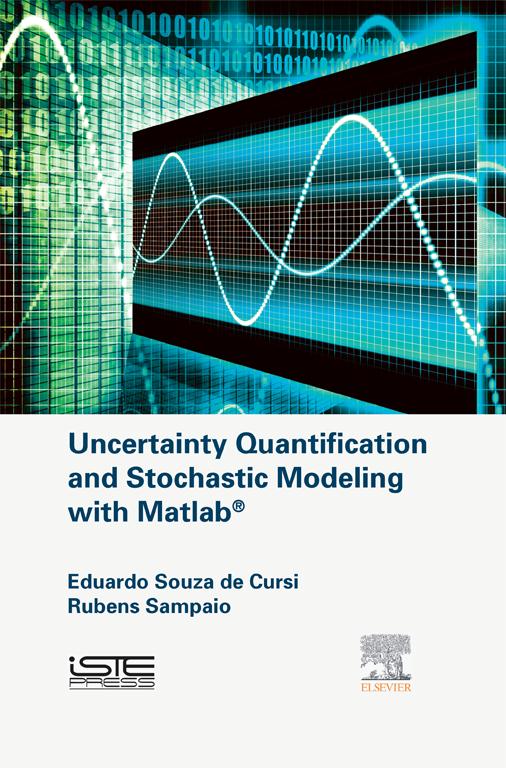

For information on all Elsevier publications visit our website at http://store.elsevier.com/ ISTE Press Ltd 2015 The rights of Eduardo Souza de Cursi and Rubens Sampaio to be identified as the authors of this work have been asserted by them in accordance with the Copyright, Designs and Patents Act 1988. MATLAB is a trademark of The MathWorks, Inc. and is used with permission. The MathWorks does not warrant the accuracy of the text or exercises in this book. This books use or discussion of MATLAB software or related products does not constituteendorsement or sponsorship by The MathWorks of a particular pedagogical approach or particular use ofthe MATLAB software. British Library Cataloguing in Publication Data A CIP record for this book is available from the British Library Library of Congress Cataloging in Publication Data A catalog record for this book is available from the Library of Congress ISBN 978-1-78548-005-8 Printed and bound in the UK and US
Starting from the Enlightenment, there was the belief that Mechanics was completely described by Newtons laws. If the initial conditions of a mechanical systems were known, then its state could be completely determined in the future as well as in the past. This was precisely the viewpoint of Lagrange and it ruled from the 18th Century to around the middle of the 20th Century. However this panglossian view of Nature was disputed, especially with the advent of Thermodynamics that challenged the belief in reversibility and started the study of complex random systems. In addition, the discovery of simple systems with chaotic behavior, that despite being deterministic, showed a very complex behavior, that the mechanical problems are far from simple. Quantum Theory, however, showed that the processes in Nature are not deterministic, but stochastic.
This change in paradigm is not yet accepted, as is well described in the book of Thomas Kuhn that discusses sociological aspects of sciences. The main ideas of probability were slow to develop. Perhaps, because chance events were interpreted as the wish of the gods and hence were not believed to be random. The first theoretical works on probability were connected with games of chance and since the set of possibilities are finite, the studies are combinatorial, but the big breakthrough being when the continuous case is studied. Stochastic modeling is, of course, harder than deterministic modeling and the implementation of the model is more costly. Let us look at this in a simple example.
In the simplest deterministic continuous model, the parameters of the model are constants. The equivalent of this in the stochastic case is to transform the constants in random variables. For each realization of the random variable, its value is also a constant, but the constant may change with the realization following a certain distribution of probability. So, the most simple object from a stochastic model random variables is formed of functions, hence objects of infinite dimension. Also, in a coherent deterministic model, we expect a solution if we fix suitable conditions. In a stochastic model this is not the case.
For each realization of the stochastic data, the parameters are chosen and a deterministic problem is solved. Then, with the set of solutions obtained, statistics are made and the main result of the problem is the distribution of probability of the results. Thus, the main element to be determined is the distribution of the possible solutions. The values obtained from a single realization are of no importance, the distribution of the values is the important result. The understanding of this fact came very slowly for the manufacturing industry, for example, and only after long years of application of quality control in the manufacturing came the realization that they were dealing with a process stochastic in nature. Since then, stochastic modeling has been essential in Engineering.
Today, reliability represents a new way of design and it takes into account the inevitable uncertainties of the processes. The solution of a stochastic model can be decomposed into three steps: generation of the stochastic data following their distribution of probability, solution of a deterministic problem for each sample generated, and finally computation of statistics with the results (for example, to construct a histogram) until they show a certain persistence (do not change an error criterion accordingly). Histograms represent the approximation of the solution of a stochastic problem. When we want an approximation of the solution of a stochastic problem, a histogram is the best approximation. If they are hard to find, or costly to compute, we make do with mean and dispersion, or a certain number of moments. In some situations, such as the ones described in , we compute only a particular probability since computation of moments is too expensive.
This book presents the main ideas of Stochastic Modeling and Uncertainty Quantification using Functional Analysis as the main tool. More specifically, Hilbert Spaces and orthogonal projections are the basic objects leading to the methods exposed. As presented in the text, some ideas often considered as complex, such as Conditional Expectations, may be developed in a systematic way by considering their definition as orthogonal projections in convenient Hilbert spaces. present methods for optimization under uncertainties. In order to help the reader interested in practical applications, listings of Matlab programs implementing the main methods are included in the text. In each chapter, the reader will find these listings which complete the methodological presentation by a practical implementation.
Font size:
Interval:
Bookmark:
Similar books «Uncertainty Quantification and Stochastic Modeling with Matlab»
Look at similar books to Uncertainty Quantification and Stochastic Modeling with Matlab. We have selected literature similar in name and meaning in the hope of providing readers with more options to find new, interesting, not yet read works.
Discussion, reviews of the book Uncertainty Quantification and Stochastic Modeling with Matlab and just readers' own opinions. Leave your comments, write what you think about the work, its meaning or the main characters. Specify what exactly you liked and what you didn't like, and why you think so.


